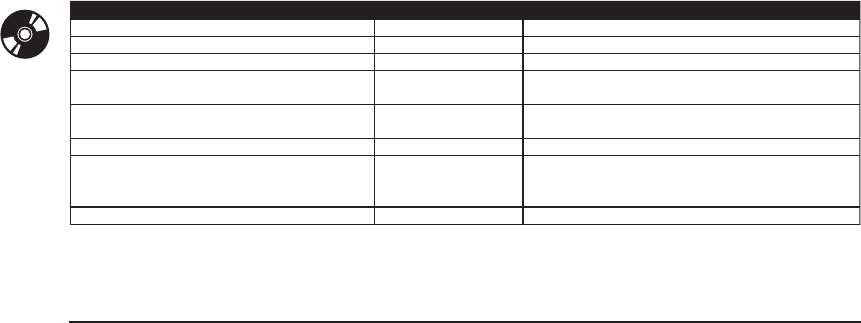
MOTION CAPTURE
In This Chapter
• Planning for Motion Capture
• Working with a Motion Capture Studio
• Preparing for a Motion Capture Shoot
• Motion Capture Checklist
12.1 I
NTRODUCTION
I
f you are working on a game where the character motions are highly vis-
ible to the player and important to the overall look and feel of the game,
you might want to consider using motion capture as part of the character
animation process. With motion capture, actual motions from humans, animals,
or even objects can be recorded and implemented in the game for a more real-
istic and natural effect. Also, as technology advances, players expect to see game
characters moving and behaving in a realistic fashion.
Motion capture must be planned for well advance so that the animators have
time to clean up the motion capture data and get the animations working cor-
rectly in the game. Based on the amount of motions captured and the number
of animators working on the project, this can be several months of work, but
well worth the effort for the end result. If you are planning to use motion cap-
ture, determine the needs in pre-production. As with any other project, planning
and organization are the keys to success. This chapter presents a general over-
view, from the producer’s point of view, of how to plan a motion capture shoot.
Chapter 12Chapter 12

196 THE GAME PRODUCTION HANDBOOK, 2/E
For more detailed information on this topic, please refer to The Animator’s
Motion Capture Guide by Matt Liverman.
12.2 PLANNING FOR MOTION CAPTURE
The lead artist and animator are heavily involved in the motion capture (mocap)
process, as they are the ones who know what the animation needs are and are
responsible for getting the animations implemented in the game. The producer
will work with them to find a vendor and plan the session.
To begin with, the animator will need to make a master list of all the anima-
tions required for the game. This includes how the characters walk, run, pick up
items, hold items, crouch, lay down, spin around, and any other movements seen
in the game. The animator then decides which animations he can create from
scratch and which animations will be based on motion capture. The advantage of
animating something by hand is that an unusual movement can be created that
a real person wouldn’t actually be able to do. Also, it might be faster to create
a good-looking animation from scratch than to edit motion capture data to get
the same effect. The disadvantages of animating something from scratch is that
movements might not seem very natural or realistic, especially if the character is
engaging in a common activity such as walking.
One of the biggest advantages of using motion capture is to create these
realistic motions. If an actual person is recorded walking from one end of the
room to the other, several small characteristics, such as gait, arm movement, and
head movement are difficult to include in an animation created from scratch.
Of course, one of the disadvantages to motion capture is cost. It can be expensive
to capture motions for the game, especially if thousands are needed.
PREPARING FOR MOTION CAPTURE SHOOTS
Stuart Roch, Executive Producer
Activision
When preparing for mocap, the most important thing a producer can do is
get started on the organization early. You will need to contact and visit a couple of
mocap studios to not only find the best possible deal, but also make sure that the
technology suits your project’s particular needs, that the mocap team personality fits
with that of your team, and that you find a studio that stands a good chance of being

MOTION CAPTURE 197
in business in the long term. In my experience, the mocap business is a tough one,
and the last thing you want is to sign up with a company that goes out of business
mid-way through your project, leaving you holding the bag.
When looking at competitive bids, it’s important to not only look at the direct
costs, such as the stage time, expendable media, or the cost of mocap markers but to
also pay attention to what can sometimes be hidden costs. A cost that can bite you
later if not negotiated and spelled out carefully, for instance, is the cost of mocap
processing. If the mocap processing costs are specified to be charged by the second,
you can run into nasty circumstances where you end up paying $30 or $100 a second
for precious seconds when the actor is in a t-pose or when the animation is starting
and ending. If you can negotiate a deal to get charged by the motion, you can save
the mocap studio and your animators overhead in analyzing each second of a motion
capture take to be purchased and save yourself the headache of keeping an eye to
the bottom line on each second of animation later.
Regardless of which way the contract is spelled out, you’ll need to have de-
tailed descriptions of what makes an easy, medium, or complex move. An easy shot
might cost you $15 a second, but a complex multi-person shot might cost you $100
a second, so you don’t want to be having arguments with your vendor later about
why a walk cycle has been classified as complex simply because your contract wasn’t
detailed enough.
With regard to scheduling, the timing of the mocap session can be flexible de-
pending on the schedule of your animation team. Be aware of the fact that when
working with a movie and sharing talent or stage time, a Hollywood production
might want to do mocap earlier or later than you might be comfortable with, put-
ting additional pressure on your animation team to either prepare for the shoot very
early in their schedule or do mocap late, forcing them to crank to get all the anima-
tion in the game.
Motion Capture Requirements
If the lead artist and animator decide that motion capture is necessary, they will
need to determine the following:
How to manage assets: Motion capture data generates many assets, so the
animator needs to have a process in place for managing the motion capture
data and converting it to an animation asset to be used in the game.
Filenaming convention: A filenaming convention is necessary so that the ani-
mator can look at the filename and understand what the motion is without having
to open the file. The filenaming convention must be established months in ad-
vance so the information can be communicated to the motion capture vendor.

198 THE GAME PRODUCTION HANDBOOK, 2/E
File formats: Although the game might use a proprietary file format for
animations, a decision must be made on what file format is needed for the
motion capture data that is being recorded.
Motion Capture Shot List
After the animator determines the motion capture requirements and has a list of
which movements should be mocapped, he will organize the movements into a
master shot list. Figure 12.1 is an example of a basic mocap spreadsheet. More
information can be added as necessary.
The first column lists an identification number for the shot, which will be
important to refer to during the actual mocap recording session. The second
column lists the base position the character starts and finishes in. A base position
is necessary so the animator can blend between different animations without the
motions popping during the transitions. The third column describes the motion
to be recorded. The fourth column lists how long the motion is. The motion
capture studio might also base their rates on the length of each motion, so this
information is important to include. The fifth column lists the game character
who is doing this motion. This is important to note so that the correct actor is
recording motions for the character. The sixth column is the filename.
This shot list is the master sheet for all the motions to be captured for the
game. Keeping this spreadsheet under version control is recommended so there
are not multiple versions. You don’t want to go to the motion capture shoot with
the incorrect list.
Schedule
As stated earlier, motion capture sessions need to happen early enough in the
project so the animator has time to clean up the data and implement the ani-
mation into the game. Figure 12.2 is a general overview of the main tasks to
schedule for the motion capture. These timeframes are based on a two-year
development cycle for a game with 500 motions done by one to two actors. This
also assumes that the motion capture studio will be able to capture 100 useable
motions per day during the recording session. The lead times are longer if the
game contains more motions and more actors.
FIGURE 12.1 Basic mocap spreadsheet.
O
N
T
H
E
C
D
ID # Base Position Motion Description Length Character File Name
1 Upright Walking (default movement) 3 secs Bulletpoint bp_up_walk_1
2 Upright Walking (default movement) 3 secs Montezuma mz_up_walk_1
3 Crouched Crouched walk, when sneaking around 3 secs Bulletpoint bp_cr_walk_1
4 Crouched Crouched walk, when sneaking around 3 secs Montezuma mz_cr_walk_1

MOTION CAPTURE 199
12.3 WORKING WITH A MOTION CAPTURE STUDIO
When choosing a motion capture studio, it is important ask the following
questions:
What is the turnaround time for animation deliverables? You need to
find a studio with a quick turnaround time, in order to make the most of your
production schedule. If their turnaround time is longer than anticipated, but you
still want to use them, include ample time in the schedule to allow for this.
How many hours are in a shooting day? Many motion capture studios
plan for an eight-hour shooting day and will charge for overtime if the ses-
sion extends past that.
What is the process for auditioning and casting actors? The motion
capture studio should be able to help you find actors for your project. Motion
capture is strenuous work, so you want to be sure the actors are used to it.
What are the rates? Some studios charge by the second, and some stu-
dios charge by the motion. Simple motions involving one person are much
cheaper than complex motions requiring multiple actors.
What additional costs are incurred? Are there any other costs for cater-
ing, props, or special setups?
How much advance notice is needed to book studio time? Can you book
the studio months in advance before you have the shot list finalized? Also,
find out whether penalties are incurred for canceling a previously booked
session. If you cancel far enough in advance, you might not get charged.
Bid Packages
Sending a bid package to different vendors allows you to compare costs and
schedules. Although one vendor may be slightly more expensive, they might also
retarget the animations for you on the character models. It all depends on what
O
N
T
H
E
C
D
FIGURE 12.2 General tasks to schedule for a motion capture shoot.
enildaeDecruoseRksaT
ateb erofeb shtnom
8 - 6 ~rotaminAdetelpmoc
t
sil erutpac noitom
laitinI
Send bid packages to motion capture studio Producer ~ 12 - 14 months before beta
oi
du
ts a
n
o
dediced
e
v
a
h
uoy
s
a noo
s
sa recudorPtoo
h
s erutpac no
i
tom r
o
f emit
koo
B
oidutS
erutpaC noitoMsrotca
noitiduA
~ 4 - 6 weeks before motion capture shoot (more time if
casting a large amount of actors).
recu
d
or
P
/r
o
taminAsrotca
t
saC
~ 4 - 6 weeks before motion capture shoot (more time if
casting a large amount of actors).
Final motion capture shot list complete Animator ~ 2 weeks before scheduled motion capture shoot
recudorP/rot
a
minAdedrocer erutpac noitoM
~ 6 - 8 months before beta (more time if a large amount
of motions or complex motions are to be recorded).
Motions processed and implemented in game Animator ~ 1 week before beta
..................Content has been hidden....................
You can't read the all page of ebook, please click here login for view all page.
